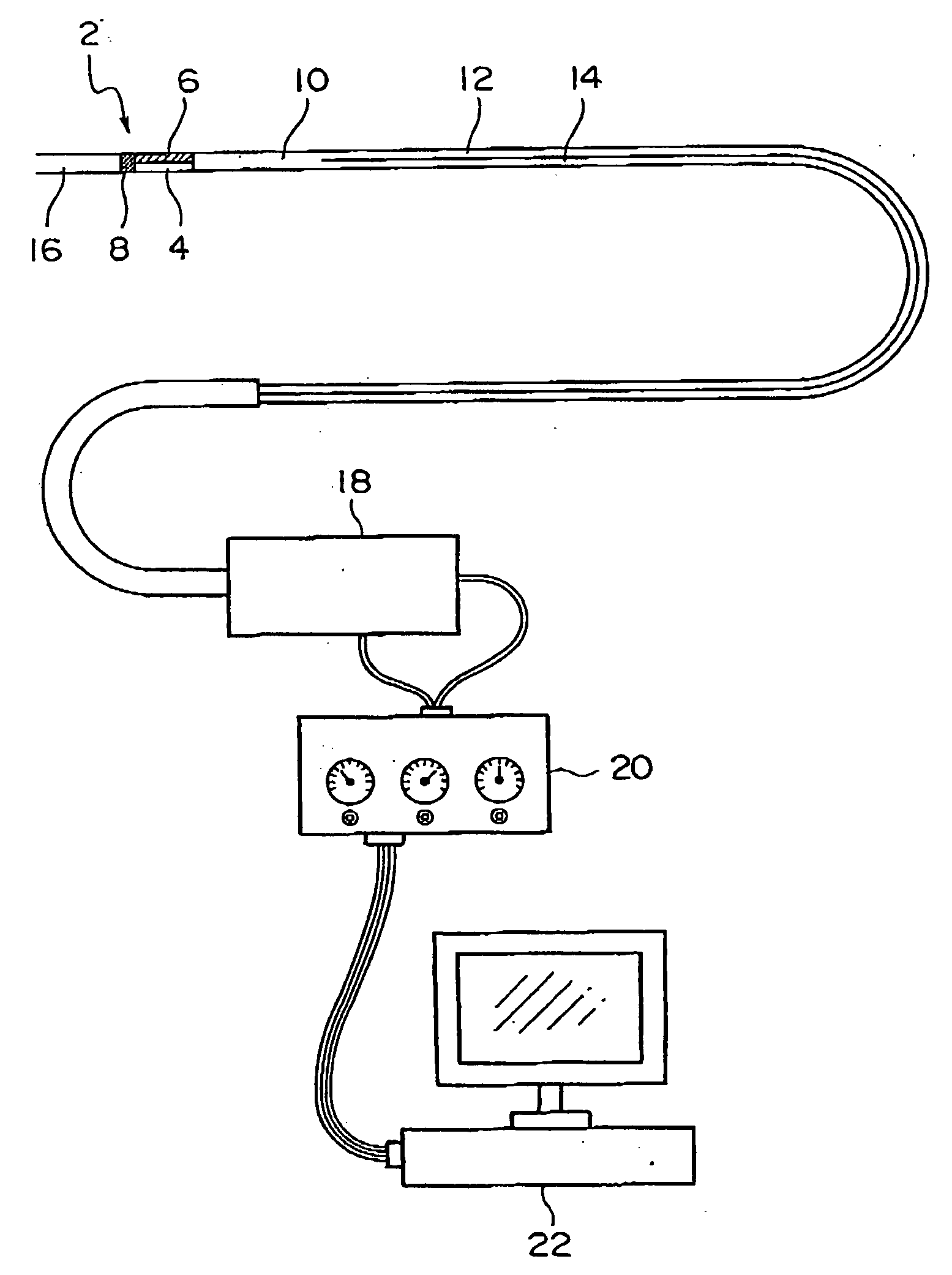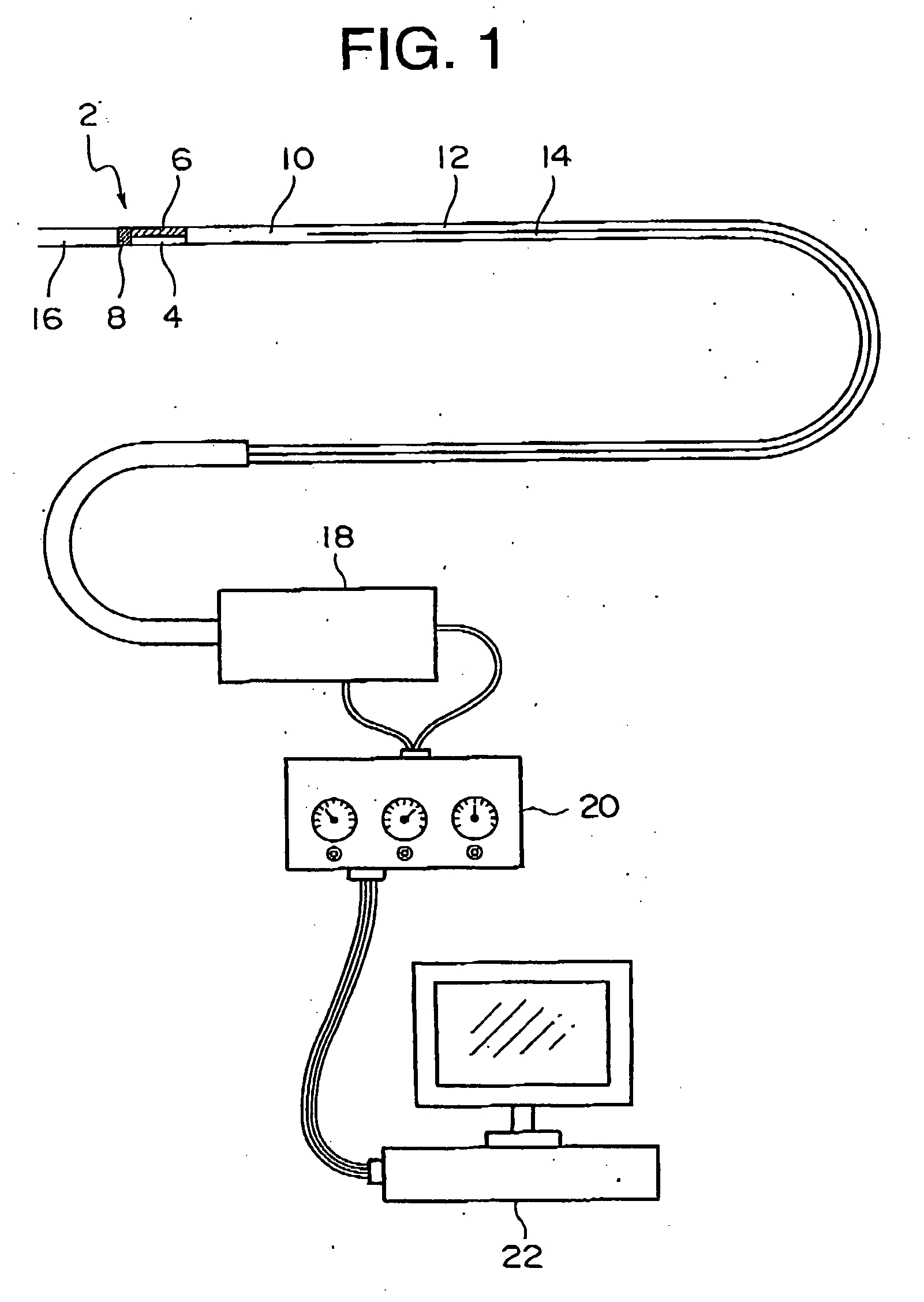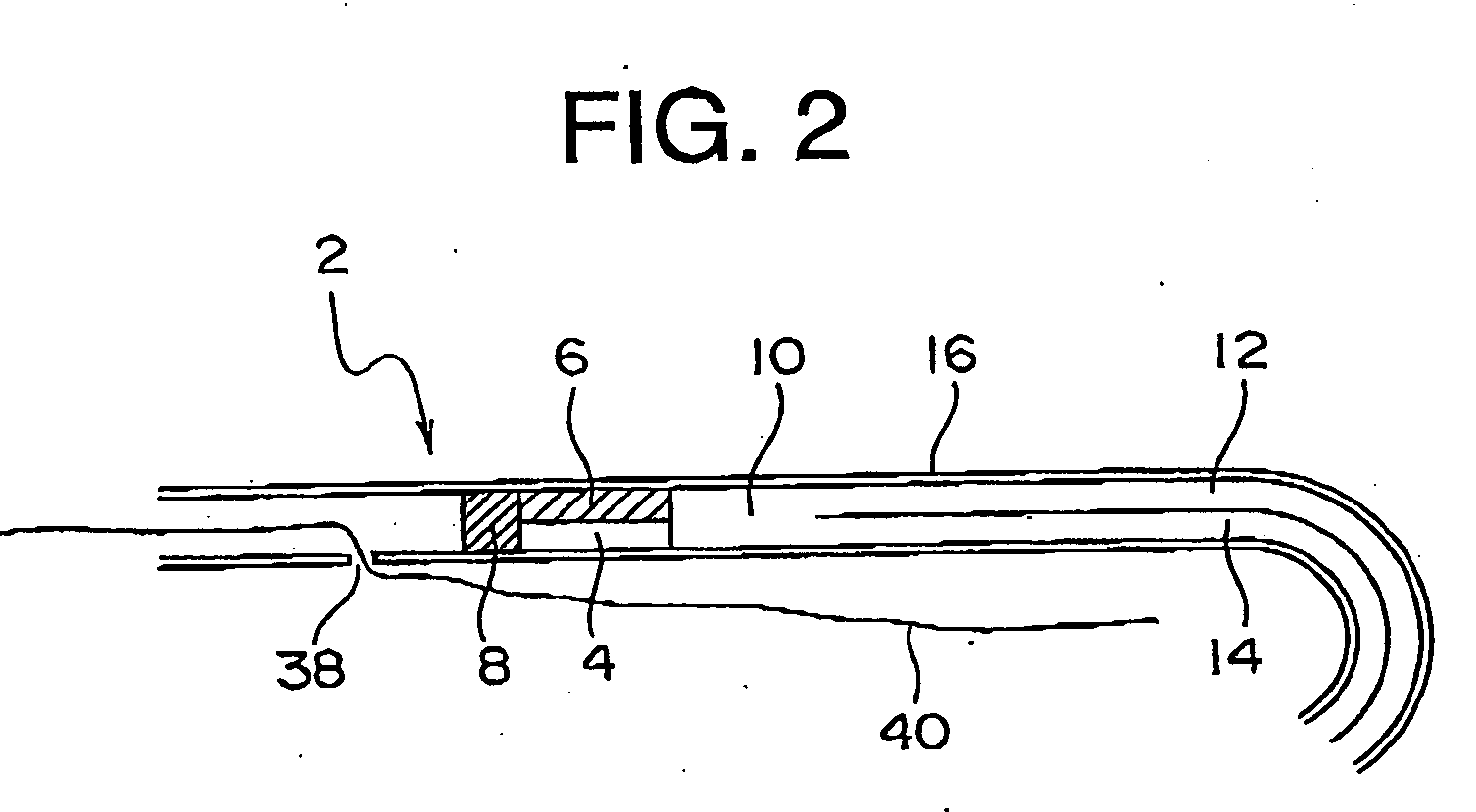Radiation detector
a detector and radiation technology, applied in the field of radiation detectors, can solve the problems of more radiation going through the scintillator, and achieve the effects of deteriorating sensitivity, and reducing the size of the scintillator
- Summary
- Abstract
- Description
- Claims
- Application Information
AI Technical Summary
Benefits of technology
Problems solved by technology
Method used
Image
Examples
example 1
Effects of the cases where the peripheral surface of the scintillator was formed to be a specular surface and where it was formed to be a diffused reflex surface (with fine convexoconcaves) were examined. In order to effectively investigate the effects of the surface treatment, a plastic scintillator with the diameter of 3 mm and the length of 15 mm was used. Optical fiber was connected to the basal end face of the scintillator and photomultipliers were connected to the optical fiber. Beta-ray (90Sr-90Y) was used as the radiation source and the radiation source was moved by a collimator with the diameter of 1 mm made of a radiopaque substance from the side face of the scintillator to the axial direction. The photomultiplier pulse height maximum value at this time was measured by a multi-channel analyzer for measuring the channel of the maximum wave. The results of the measurement are shown in FIG. 5 to FIG. 7. The spectral diagrams A to J in FIG. 5 and FIG. 6 show the pulse height ...
example 2
A sensitivity test was performed on the radiation detector shown in FIG. 1 to FIG. 3. In this case, the scintillator was made of plastic with the diameter of 1.0 mm and the length of 5.0 mm. The optical fiber aggregation was prepared by bundling up some tens of optical fibers with the diameter of 40 μm to be in the diameter of 0.8 mm and the length of 2000 mm. The scintillator and the optical fibers were not covered by a lightproof cover so that the test was carried out in a dark field. The test results performed on 111In as gamma-ray nuclide and 89Sr as beta-ray nuclide are as follows.
1. Detection Efficiency, Detection Limit
After dropping 3.0 μl radiation source into a dent with the diameter of 2.0 mm and the depth of 1.3 mm formed in an acryl plate, the dent was sealed and the scintillator was set to be in contact with the radiation source sealed area for carrying out the measurement. A set of measurement for 10 seconds was repeated for 10 times and the average was calculated...
PUM
 Login to View More
Login to View More Abstract
Description
Claims
Application Information
 Login to View More
Login to View More - R&D
- Intellectual Property
- Life Sciences
- Materials
- Tech Scout
- Unparalleled Data Quality
- Higher Quality Content
- 60% Fewer Hallucinations
Browse by: Latest US Patents, China's latest patents, Technical Efficacy Thesaurus, Application Domain, Technology Topic, Popular Technical Reports.
© 2025 PatSnap. All rights reserved.Legal|Privacy policy|Modern Slavery Act Transparency Statement|Sitemap|About US| Contact US: help@patsnap.com



